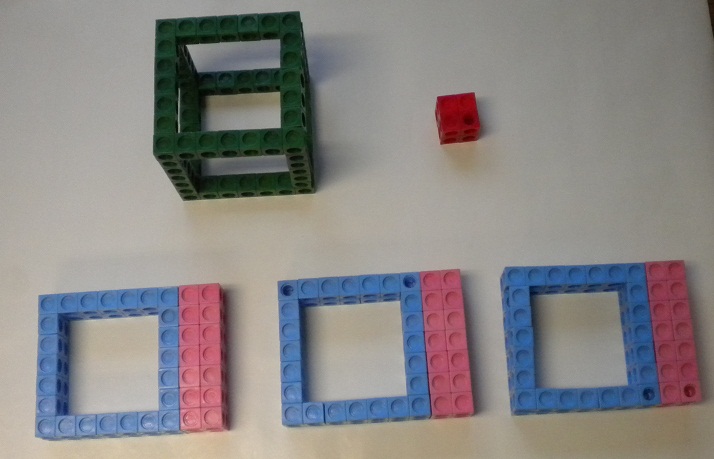- About MAA
- Membership
- MAA Publications
- Periodicals
- Blogs
- MAA Book Series
- MAA Press (an imprint of the AMS)
- MAA Notes
- MAA Reviews
- Mathematical Communication
- Information for Libraries
- Author Resources
- Advertise with MAA
- Meetings
- Competitions
- Programs
- Communities
- MAA Sections
- SIGMAA
- MAA Connect
- Students
- MAA Awards
- Awards Booklets
- Writing Awards
- Teaching Awards
- Service Awards
- Research Awards
- Lecture Awards
- Putnam Competition Individual and Team Winners
- D. E. Shaw Group AMC 8 Awards & Certificates
- Maryam Mirzakhani AMC 10 A Awards & Certificates
- Two Sigma AMC 10 B Awards & Certificates
- Jane Street AMC 12 A Awards & Certificates
- Akamai AMC 12 B Awards & Certificates
- High School Teachers
- News
You are here
Solving the Cubic with Cardano - Solving the Cubic
Solving the Cubic
Having depressed \(x^3=6x^2+100\) to \(y^3=12y+116,\) we now move to Chapter 12, where Cardano took up the solution to “cube equal to thing and number.” This chapter, like many of his chapters, contains a geometric demonstration, a rule, and several examples. Oddly, perhaps, his demonstration and his rule are seemingly unconnected: the demonstration shows that a particular number is the solution to the cubic problem but does not show how to find that number, while the rule provides an algorithm to find directly the solution in terms of the coefficients, without reference to the number produced by the demonstration. The bridge between the demonstration and the rule, which Cardano left implicit, is an abbaco “rule of ten” problem.
Taking up the demonstration first, Cardano showed that, if ab and bc satisfy the relations (ab)3 + (bc)3 \(=b\) and 3(ab)(bc) \(=a,\) then the solution ac of the original problem (ac)3 \(=a\)(ac) \(+\,b\) is the sum of ab and bc. His demonstration rested on a manipulation of the decomposition of the cube presented above. In Figure 2, we have the cube with edge ac. By cutting it at b, we get the usual decomposition presented in Figures 2 and 3. Cardano then arranged the solids of the decomposition as in Figure 13. The green cube with edge ab and the red cube with edge bc are grouped together, while the pink and blue solids are grouped into three solids with edges ab, bc, and ab + bc = ac.

Figure 13. The cube ae decomposed for solving a cubic (compare with Figures 6 and 7 on preceding page).
The original problem, symbolically \(y^3=12y+116,\) is represented geometrically by
(ac)3 = 12(ac) + 116
or, decomposing the cube of volume (ac)3 as in Figure 13, by
(ab)3 + (bc)3 + 3(ab)(bc)(ac) = 12(ac) + 116.
The term (ab)3 + (bc)3 is represented by the green cube and the red cube, while the term 3(ab)(bc)(ac) is represented by the three pink and blue volumes. Matching coefficients yields these two equations:
(ab)3 + (bc)3 = 116
3(ab)(bc) = 12
All this leaves the location of the cut at b undetermined. If this cut can be determined, then ac = ab + bc is the solution of the problem. But Cardano ended his demonstration here, and moved directly to the following rule for the solution (as translated by T. Richard Witmer in [Cardano 1993, p. 103]):
When the cube of one-third the coefficient of x is not greater than the square of one-half the constant of the equation, subtract the former from the latter and add the square root of the remainder to one-half the constant of the equation and, again, subtract it from the same half, and you will have, as was said, a binomium and its apotome, the sum of the cube roots of which constitutes the value of x.
Buried in this rule are ab and bc: one is the binomium and one is the apotome [Note 1]. But how did Cardano get from his demonstration to the rule?
The bridge, I believe, was provided by the abbaco master Cardano’s recognition that the problem resulting from the matching of coefficients above is a “problem of ten.” Cardano nowhere in the Ars Magna explicitly provided a solution for this specific problem. But, re-written as
(ab)3 + (bc)3 \(=b\)
(ab)3 (bc)3 \(={{\left({\frac{a}{3}}\right)}^3},\)
this is a “problem of ten” identical in form to the problem from Al-Khwarizmi discussed earlier. Following the same method of solution, Cardano would have arrived at \[({\rm{\bf ab}})^6+{\left({\frac{a}{3}}\right)^3=b({\rm{\bf ab}})^3},\] an equation he recognized as a disguised \(x^2+B=Ax\) [Note 2]. Solving this equation for (ab)3 gave the usual two solutions from the quadratic equation, the binomium and its apotome. Hence, the sum of the cube roots of the apotome and the binomium gave the solution to the original cubic, as his rule stated. Contained in his rule is the restriction that \[{\left({\frac{a}{3}}\right)^3}\le{{\left({\frac{b}{2}}\right)}^2};\]this is the requirement that the discriminant of this quadratic be non-negative. This explicit recognition of the quadratic nature of the problem supports the idea that Cardano solved it as a “problem of ten.”
Notes for Solving the Cubic
- A binomium is a term of the form \(a+{\sqrt b};\) its apotome is its conjugate \(a-{\sqrt b}.\) They arise naturally in the solution of quadratic equations.
- In Chapter 2 of the Ars Magna [Cardano 1662, pp. 226-227], Cardano listed both \(x^4+B=Ax^2\) and \(x^6+B=Ax^3\) as derivative cases of \(x^2+B=Ax.\)
William B. Branson (St. Cloud State University), "Solving the Cubic with Cardano - Solving the Cubic," Convergence (September 2013), DOI:10.4169/convergence20131001




